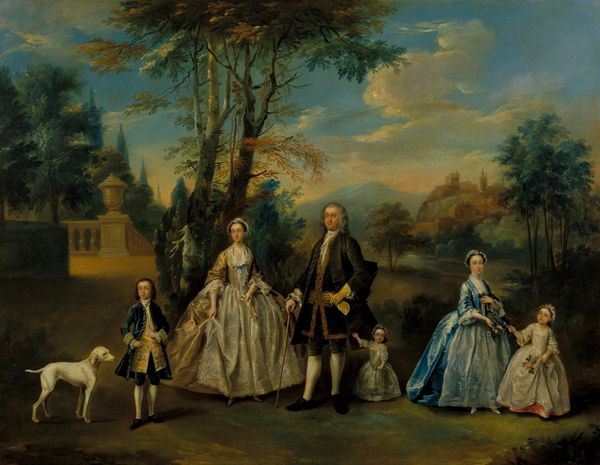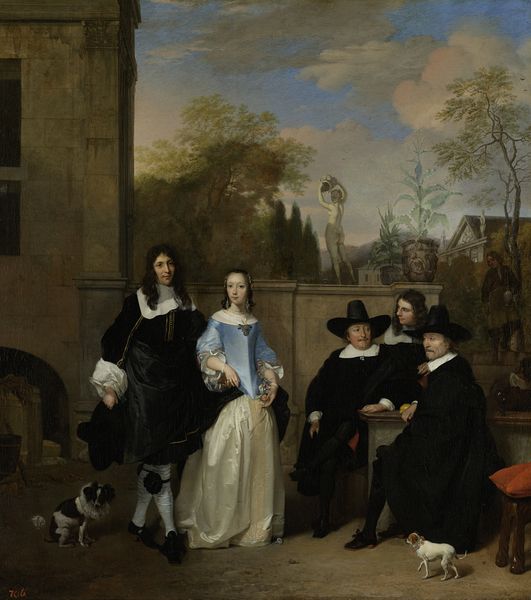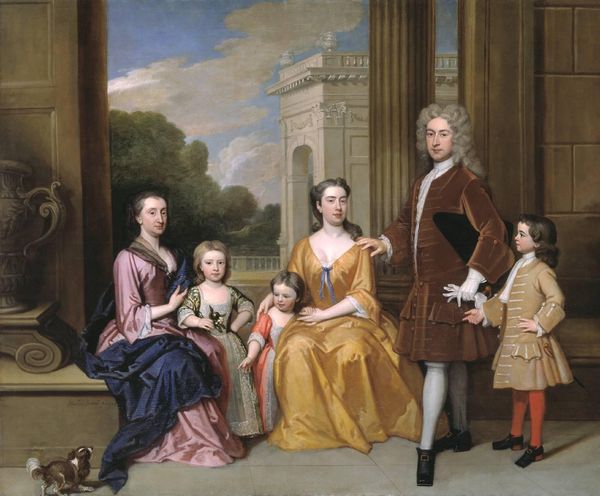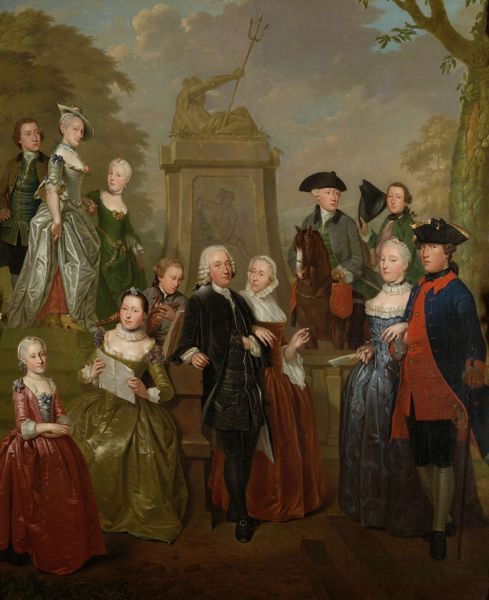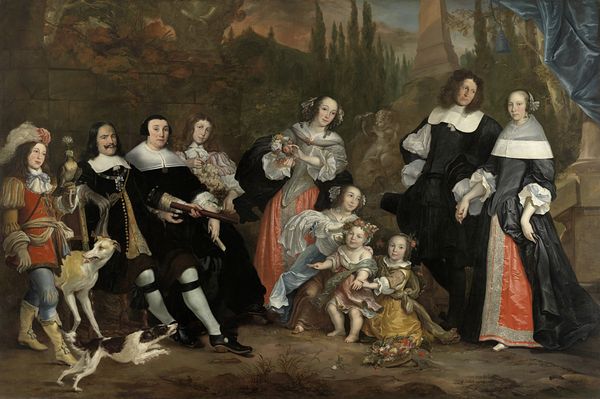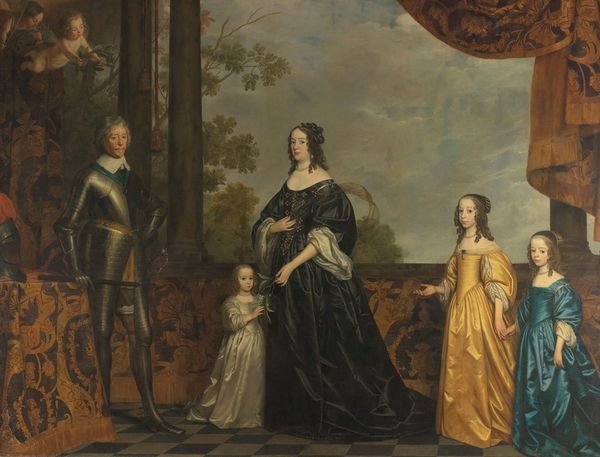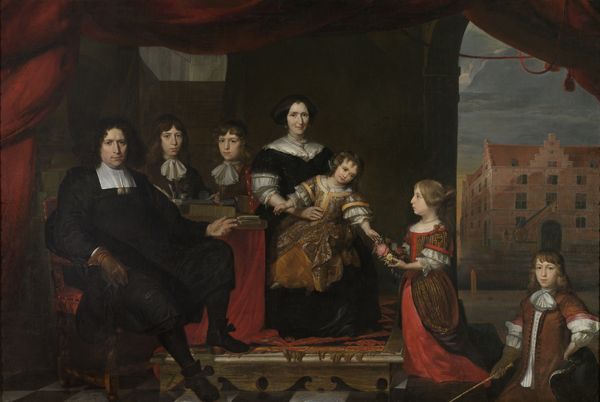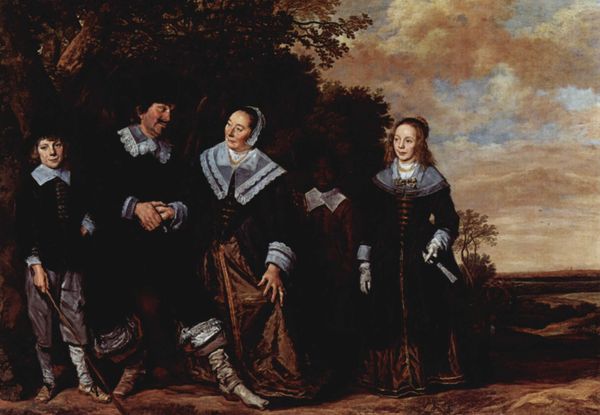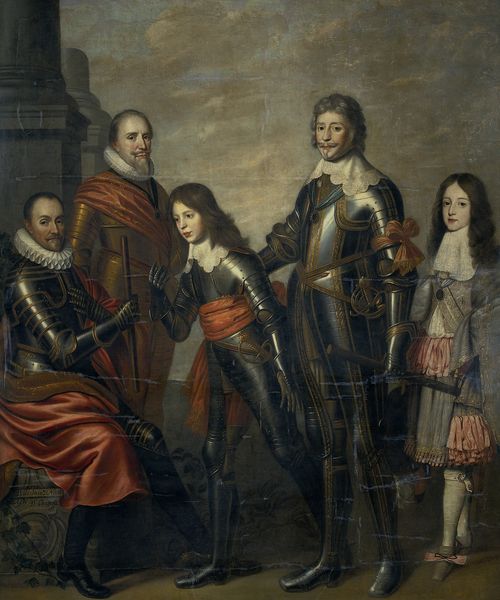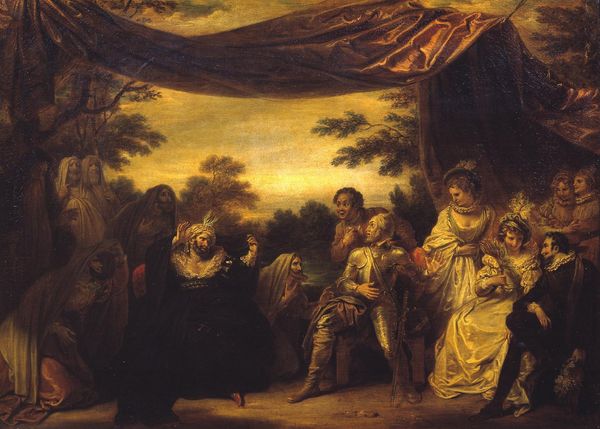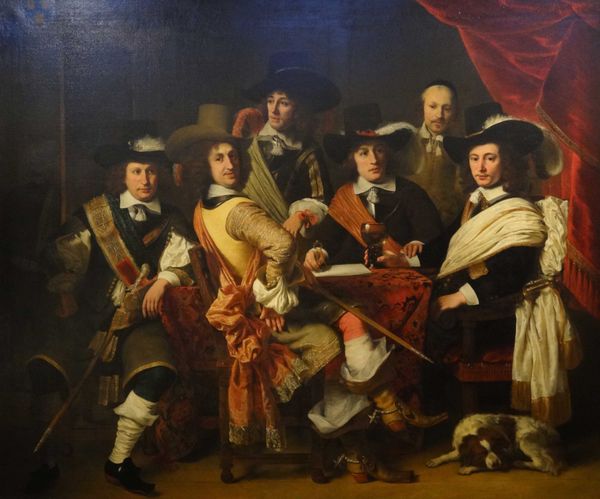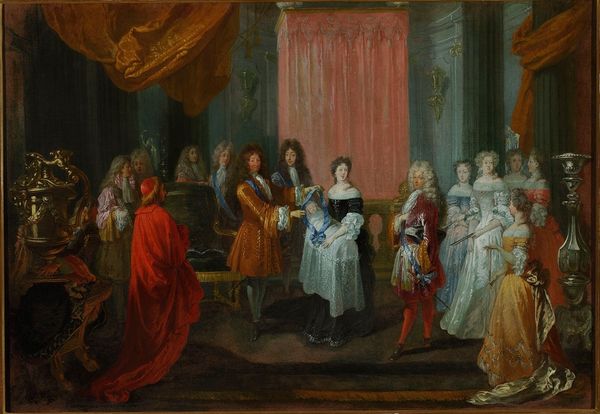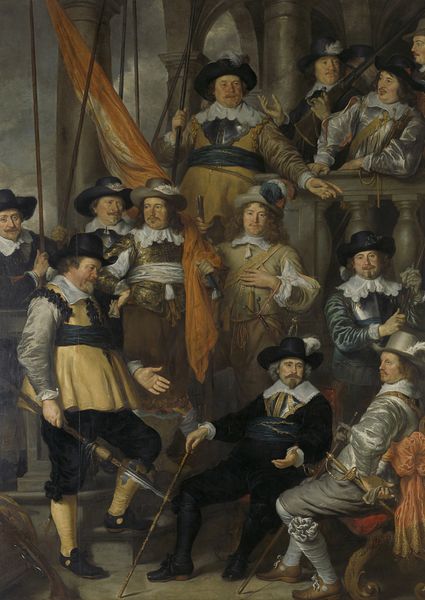
Pieter Cnoll, Cornelia van Nijenrode, their Daughters and Two Enslaved Servants 1665
0:00
0:00
painting, oil-paint
#
portrait
#
narrative-art
#
baroque
#
dutch-golden-age
#
painting
#
oil-paint
#
dog
#
group-portraits
#
genre-painting
Dimensions: height 132 cm, width 190.5 cm, height 141.5 cm, width 201.5 cm, thickness 7.5 cm, weight 23 kg
Copyright: Rijks Museum: Open Domain
Editor: Here we have "Pieter Cnoll, Cornelia van Nijenrode, their Daughters and Two Enslaved Servants," painted in 1665 by Jacob Coeman using oil paints. The sitters' clothes really stand out. What can you tell us about this work? Curator: Well, let's consider the materials: the finely woven fabrics of their garments, the oil paint itself, even the fruit presented by the enslaved servants. These weren’t simply commodities; their production and trade fueled the Dutch Golden Age. Where do you think these resources originate? Editor: Judging by the enslaved servants, perhaps somewhere far away? Someplace tropical for the fruit? Curator: Precisely. The enslaved servants are integral to understanding the global networks of trade and exploitation that supported the Cnoll family's lifestyle. Note their dress compared to that of the family – a study in contrasts that speaks volumes about the social order maintained by material disparity. What kind of statement is being made about Dutch affluence? Editor: The subjects' elevated social status must have depended on cheap labor and resource extraction in the colonies. It seems wrong that their presence in this image is essentially decorative! Curator: Exactly. The artist implicates not only the sitters, but the consumers of the work and by extension us, in that economy. So, can a portrait still be beautiful when it so plainly illustrates inequality? Does it gain or lose merit? Editor: That's an uncomfortable question. I suppose acknowledging those aspects enhances my appreciation for the work, although it challenges the way I look at it! Curator: It does for me, too. That's what focusing on the material realities and how they were constructed is so vital, and this is only the tip of the iceberg.
Comments
rijksmuseum about 2 years ago
⋮
Cnoll was a senior merchant of the Dutch East India Company (VOC) in Batavia. In that position, in addition to his official function, he could conduct private business and become wealthy in a short period of time. Cornelia was the daughter of a VOC merchant and a Japanese courtesan. This portrait illustrates the opulence of their lifestyle and surroundings. The clothing – the latest Dutch fashion – is adorned with the most precious jewels. In the background are two of their fifty enslaved servants.
Join the conversation
Join millions of artists and users on Artera today and experience the ultimate creative platform.
